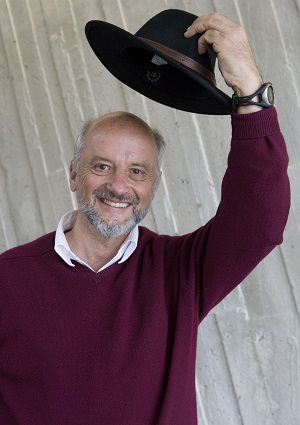Piermaria Oddone - Biography

Pier Oddone.
A native of Peru, Piermaria Oddone came to the United States in 1961 to attend MIT. After receiving his undergraduate degree in 1965, he received his PhD in physics from Princeton University in 1970. While a postdoc at Caltech, Oddone was an author on the proposal for E-21A, which was accepted in October 1970 as one of the first round of experiments at Fermilab. He joined Lawrence Berkeley National Laboratory in 1972, where he served as director of the Physics Division (1989-1991) and deputy director (1990-2005). He received the 2005 Panofsky Prize of the American Physical Society for his 1987 idea to use an Asymmetric B-Factory to carry out precision measurements of CP violation in B-meson decays, which led to its construction at SLAC in 1999. Most of Oddone's research has been based on results from electron-positron colliders.
Oddone became Fermilab's fifth director on July 1st, 2005. He oversaw the lab during a period of great change and financial hardship. The construction of the Large Hadron Collider at CERN forced Fermilab to adjust its role in the exploration of the energy frontier, eventually triggering the shut down of the Tevatron in September 2011. The global financial crisis contributed to budget cuts and forced layoffs, while much of the scientific staff divided its time between Fermilab and the LHC.
Despite these challenges, the lab continued to do ground-breaking science under Oddone. As director-designate, Oddone participated in the celebrations marking the achievement of one inverse femtobarn of integrated luminosity in Run II of the Tevatron in June 2005. Physicists from CDF and D0 collected unprecedented amounts of useful data from the Tevatron right up until its shutdown, and they continued to analyze data from these experiments long afterwards. Their work contributed to the discovery of the Higgs boson in 2012. Fermilab continued to work closely with CERN, opening the LHC Remote Operations Center in 2007. In 2008, a panel formed by the Department of Energy's High Energy Physics Advisory Panel first put forward the idea that high energy physics was comprised of three frontiers: the energy frontier, the intensity frontier, and the cosmic frontier. This provided Fermilab with a new framework for its research, and experiments at the intensity and cosmic frontiers helped the lab maintain its status as a world leader in the field of high energy physics. Fermilab broke ground on the NOvA experiment in 2009, launching the next generation of neutrino experiments, and the Dark Energy Camera began recording images in 2012. Construction began on the Illinois Accelerator Research Center in 2011, which was established to facilitate technology transfer between Fermilab and industry.
In 2011, Oddone was elected to the National Academy of Sciences. In July 2013, Oddone retired from his position as Fermilab's director.


